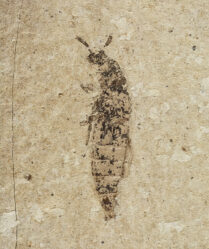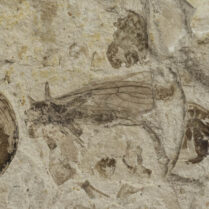Description
Dragonfly nymph – Libellulidae naiad
Pliocene
Rita Blanca Formation
Oldham County, TX USA.
Two large 20mm and 17mm nymphs on 100mm slab. Extremely rare.
Insect. Arthropod.
Dragonflies have a long fossil history dating back to the Pennsylvanian Period. It was a time of a higher oxygen content in the atmosphere and this allowed insects and other terrestrial invertebrates to grow much larger than they do today. Some dragonflies had wingspans over two feet.
Fossil specimens of both larval and adult dragonflies have been found from the Mesozoic to Cenozoic (sites in the Americas, Europe) but they tend to be uncommon – rare at some sites. Today, larvae (aka naiads or nymphs) live in freshwater ponds and lakes for a few to several years before crawling out of the water and molting with fully functional wings and flying off as an adult. Naiads feed on mosquito larvae or whatever they can catch and the adults feed on adult mosquitoes or whatever they can catch.
Here is a special specimen for the insect collector in your life.





